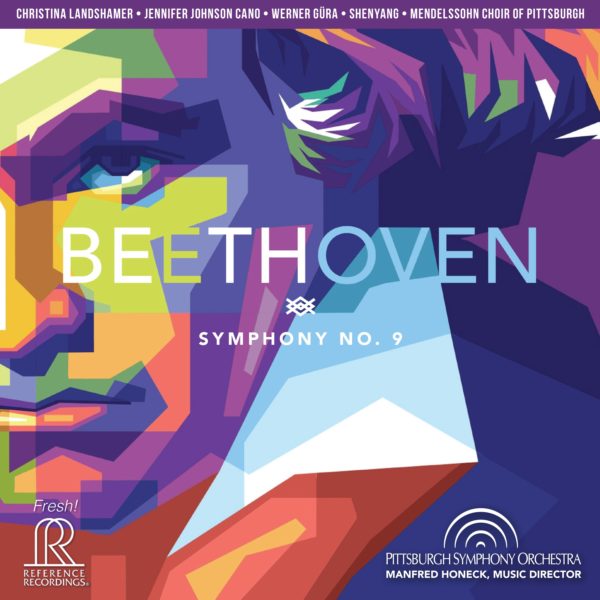
Getting a CD in the mail from Reference Recordings is always a little like Christmas, especially when the package contains a new release by Manfred Honeck and the Pittsburgh Symphony Orchestra. That’s because I know that there will always be an interesting and often exhilarating interpretation of whatever work(s) Honeck decides to bring the listener.
So, it was very exciting to open up the package and find Honeck’s most recent present, Beethoven’s Symphony No. 9 in D minor, Op. 125.
As with all his recordings, Honeck also wrote the CD liner notes. On this recording, Honeck titled his notes “Beethoven 9 – A Universal Musical Manifesto for All Time.” And, indeed, as Honeck points out, Beethoven’s Ninth, with its Finale, the so-called “Ode to Joy,” has been played at momentous events, for example the fall of the Berlin Wall in 1989, and is often used for similarly uplifting occasions. It turns out, as Honeck tells us, that the original text by Schiller began as a drinking song. Not exactly, the Ode to Joy that Beethoven had in mind.
Right out of the gate, one can feel and hear the intensity which Honeck wants us to experience in this symphony. The sound is crisp and sharp. Somehow, Honeck has made the PSO sound like one of the original instrument orchestras. Perhaps it’s his way of bringing out all the individual instruments, which is not easy in any symphonic work, much less one as richly orchestrated as Beethoven’s Ninth. And the engineers at Soundmirror have made us feel like we’re in Heinz Hall listening to the live performance of this outstanding orchestra. My recommendation is to listen to this recording on a great sound system with the volume turned way up.
In addition to the exceptional tonality, Honeck has decided to take each movement at a very fast clip (in fact, one of the fastest, if not the fastest among available recordings). The first two movements really propel the listener toward the third Adagio movement, which Honeck really plays like a slow andante. No matter; it’s still a very moving interpretation.
Honeck’s very quick tempo works in the first three movements, giving at least the first two movements a sense of urgency; but, at least for this reviewer, it did not work as well in the Finale. That’s not to say that it wasn’t still breathtaking, but it seemed too fast, especially given the nature of the text. I understand Honeck’s rationale for the quick tempo of the Finale. After all, he was just following Beethoven’s Presto and Prestissimo markings at the beginning of the movement and the last section, respectively. But Honeck and the PSO blow Beethoven’s suggested tempos out of the water.
About the last Prestissimo section in the Finale, Honeck writes, “Here I have tried to go to the limit of playability.” And one has to offer kudos to the PSO players who were able to accommodate Honeck’s demands. Also, the soloists in the Finale, Christina Landshamer, soprano, Jennifer Johnson Cano, mezzo-soprano, Werner Güra, tenor, and Shenyang, bass-baritone, along with the Mendelssohn Choir of Pittsburgh, were all stellar, and one can understand why Honeck chose them for this performance.
Of course, it’s all a matter of preference and also what one may be used to. Most recordings and performances of the Beethoven Ninth do not exceed Beethoven’s tempos and many take them slower. Against that backdrop, Honeck’s tempos are shocking. It may be that his interpretation requires more than one listen. And who knows, maybe it will become the go-to interpretation.
I will say this: The performance and the recording bristle with energy and excitement and really cast this familiar symphony in a new light.
—Henry Schlinger, Culture Spot LA
Visit Reference Recordings: https://referencerecordings.com/recording/beethoven-symphony-no-9/





